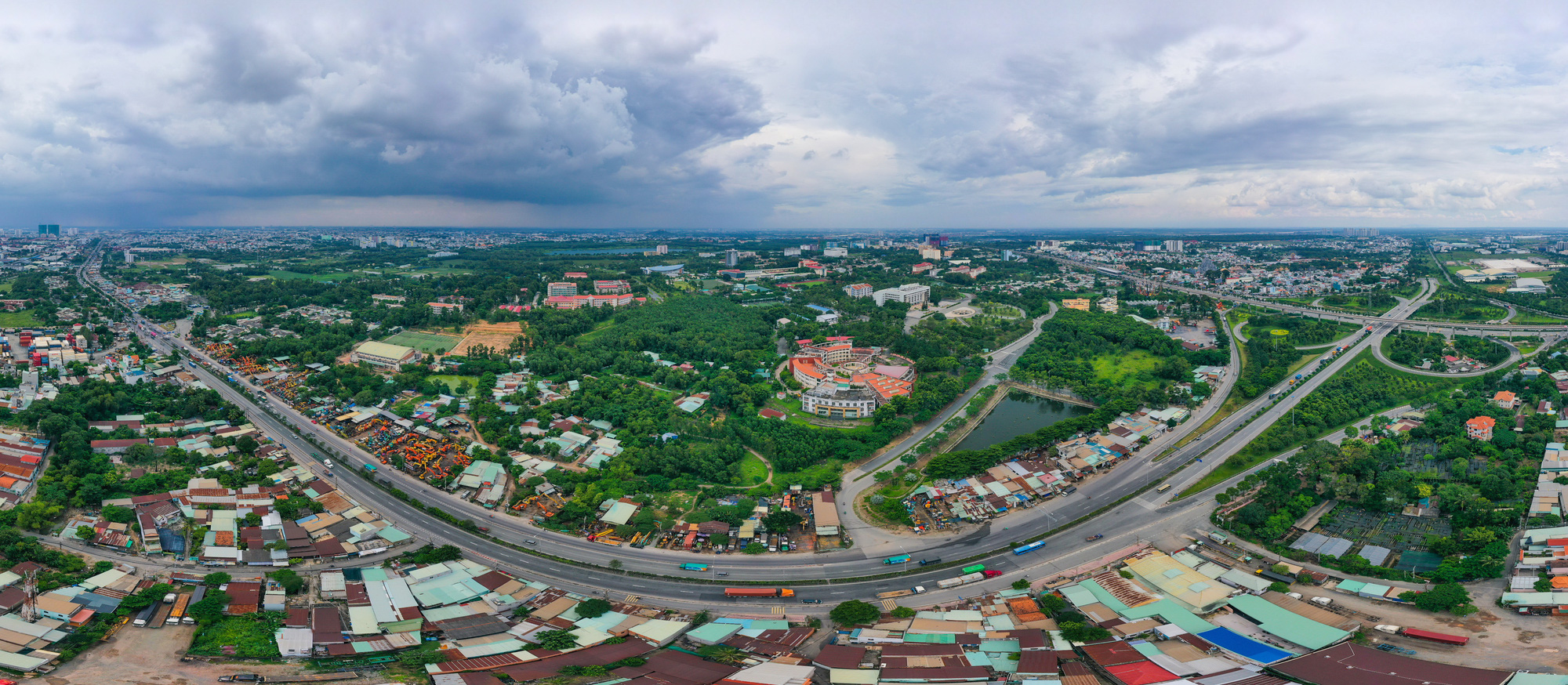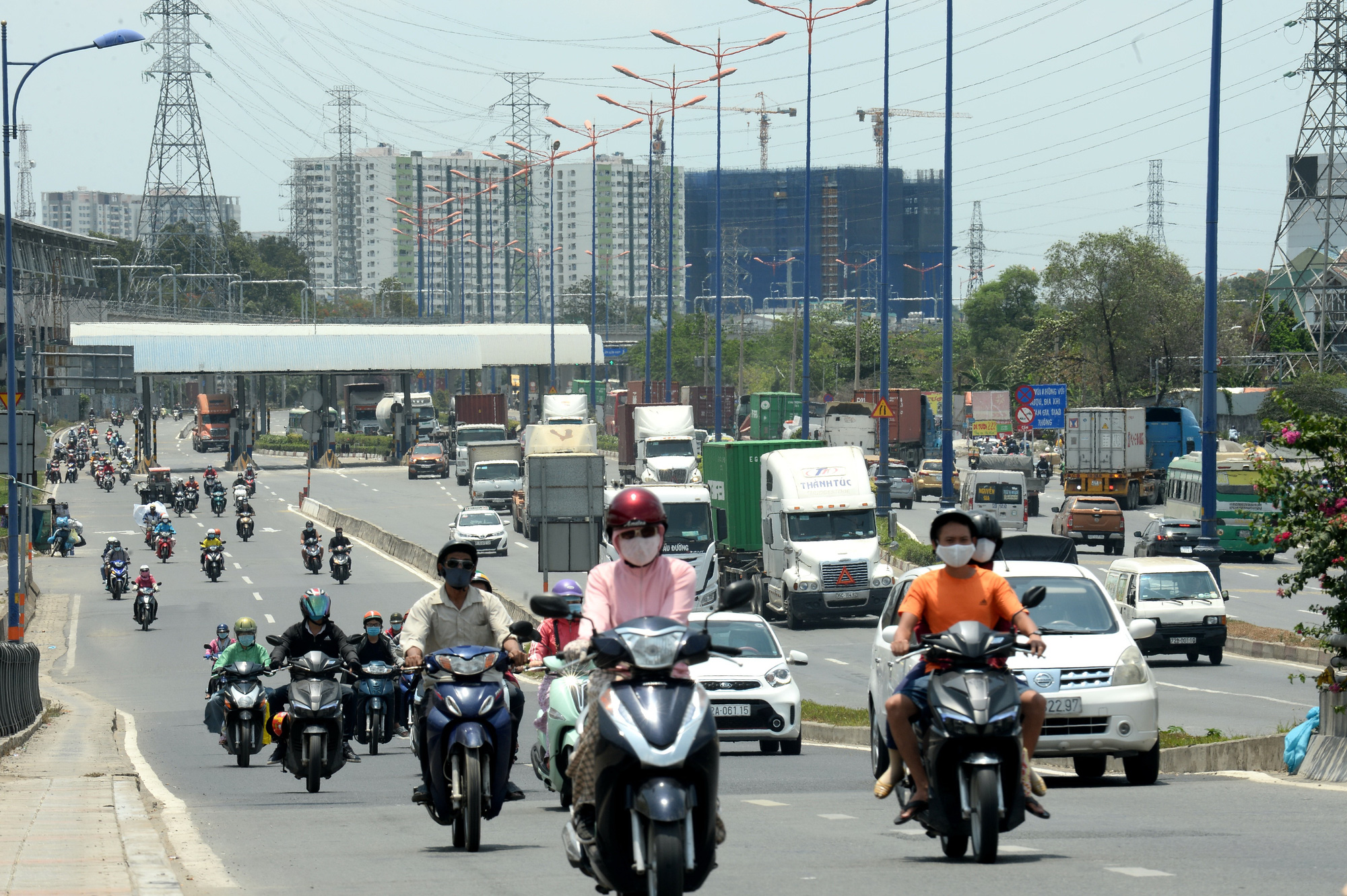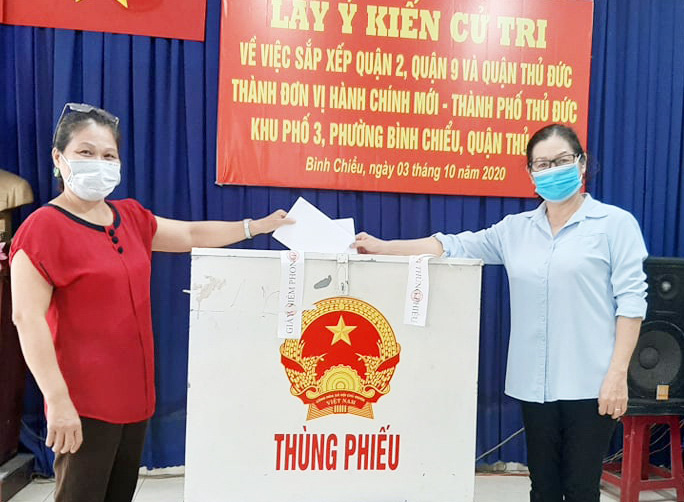Many people have been focusing on how to name Ho Chi Minh City’s new ‘eastern city’ and how to merge local wards and districts without interfering with the lives of residents in District 2, District 9, and Thu Duc District.
On October 6, the Vietnam Fatherland Front Committee of Ho Chi Minh City held a conference to discuss a project on arranging administrative units at district and commune levels for the 2019-21 period.
National Assembly deputies in the city also convened a meeting with residents in District 9 and Thu Duc District on the same day.
At the conferences, most participants agreed on the proposal to merge local administrative units to boost development, while the others concentrated on the possible consequences after the process is carried out as well as how to name the merged localities in a reasonable and convincing manner.
The merger of wards and districts has been included in the project, but the actual implementation still poses concerns among affected citizens.
Everybody wishes that the government has solid plans and preparations so that the new city will become a new growth pole for Ho Chi Minh City.
Which name to give?
At the conference of the city’s Vietnam Fatherland Front Committee, the majority of people raised questions about the naming process of the new administrative unit and hoped that the merger would not affect their lives.
A poll was previously organized and most residents in District 2, District 9, and Thu Duc District agreed that the new city should be named ‘Thu Duc City.’
The approval rates were 76.8 percent in District 2, 96 percent in District 9, and 97.5 percent in Thu Duc District.
Over 21,300 people in the three districts, of whom nearly 14,600 are in District 2, did not agree to name the new city ‘Thu Duc City.’
More than 1,800 people in the three districts had other ideas to name the new city, including Eastern City, New Thu Duc City, Sai Gon Gia Dinh City, or Thu Thiem City.
“I think Thu Thiem City would sound better. This name is not only associated with the financial center of Ho Chi Minh City in the future, but also embodies a new development goal,” said Nguyen Huy Thoai, a resident in Binh An Ward, District 2.
Meanwhile, Le Thanh Tung, a citizen in District 9, believed that Thu Duc City would be the most suitable name.
“This area was previously named Thu Duc before being divided into three different districts. Going back to its original name represents the tradition and continuation of the current generation,” Tung elaborated.
|
|
| People travel on a street located in the future new city. Photo: Tu Trung / Tuoi Tre |
Benefiting residents
During the meeting with residents in District 9 and Thu Duc District, locals expressed their concern over difficulties regarding their addresses and administrative paperwork when the districts are merged together.
“How long will procedures related to the change of IDs, family books [or ‘ho khau’], and other documents take and how much will they cost? Authorities should have clear regulations and support policies for affected citizens,” a resident in District 9 said.
Phan Nguyen Nhu Khue, a National Assembly deputy in Ho Chi Minh City, said that authorities are still collecting feedback on the project to reshuffle district- and commune-level administrative units in the metropolis.
There are also many sub-projects, several of which are aimed at eliminating problems for local residents, Khue elaborated.
Competent authorities are carrying out thorough studies on how to change the IDs and family books of affected residents and whether or not to change street names and rearrange addresses, the lawmaker said.
The overall project predicted several negative impacts of the merger, including the change of addresses that would affect residents’ personal documents and the cost of altering relevant paperwork and signboards.
To solve these issues, the Ho Chi Minh City Department of Public Security will be tasked with guiding their district- and commune-level units to speed up procedures related to the change of relevant documents.
The merger plan has been approved, and the problem now is to discuss an implementation method that will be most beneficial for the people, said Phan Anh Minh, former deputy director of the municipal public security department.
To speed up administrative procedures and prevent troubles for local residents, the number of human resources for such process will increase after the merger is complete, Minh added.
|
|
| Residents in Binh Chieu Ward, Thu Duc District, Ho Chi Minh City cast their votes on the merger of District 2, District 9, and Thu Duc District. Photo: D.N.Ha / Tuoi Tre |
Authority of the new city
According to Vo Kim Cuong, former deputy chief architect of Ho Chi Minh City, the project still lacks an assessment of current shortcomings among administrative units.
There need to be specific assessments on efficiency and possible consequences after merging, along with particular data so that suitable solutions can be determined, Cuong said.
To boost the development of the new city, Minh believed that it is necessary to strengthen the authority of this special administrative unit.
“Thu Duc City will be merged from three districts. There will be a problem if the new city only has the authority of a district-level administrative unit, as it will have to manage a larger area, higher budget revenue, and bigger population,” Minh elaborated.
The power of district-level administrative units is limited when it comes to laws on land, investment, and budget, the former police official said, adding that the National Assembly will need to issue a resolution to upgrade the authority of the new city.
Prompt implementation is necessary
Huynh Thanh Nhan, director of the Ho Chi Minh City Department of Home Affairs, said authorities will continue reviewing the opinions of local residents, experts, and scientists to complete the project with full legal basis and administrative maps.
This rearrangement of administrative units must be done in 2020, as elections of the new-tenure National Assembly and People’s Councils will take place in mid-2021.
“If we miss this time, we will have to wait for another five years to carry out the project,” Nhan stated.
Thu Duc City will have eight centers
Financial center associated with Thu Thiem New Urban Area
Rach Chiec Sports and Health Center
High-tech production center
Center for higher education and training and high-tech scientific research
Largest creative startup center in Vietnam
Center for ecological technology – Tam Da area and Long Phuoc University
Transport hub connecting the southeast region and the Cat Lai container port
Truong Tho port urban area
After the conference on October 6, the municipal Department of Home Affairs and related units will prepare reports and submit them to the municipal People's Committee.
* On October 7, the Law Committee of the National Assembly appraises the project.
* On October 8 and 9, ward-level People's Councils hold meetings to give feedback on the project.
* On October 10, People's Councils of relevant districts convene a meeting to give comments on the project.
* On October 12, the Ho Chi Minh City People’s Council convenes a meeting to consider the approval of the project.
Like us on Facebook or follow us on Twitter to get the latest news about Vietnam!





















































